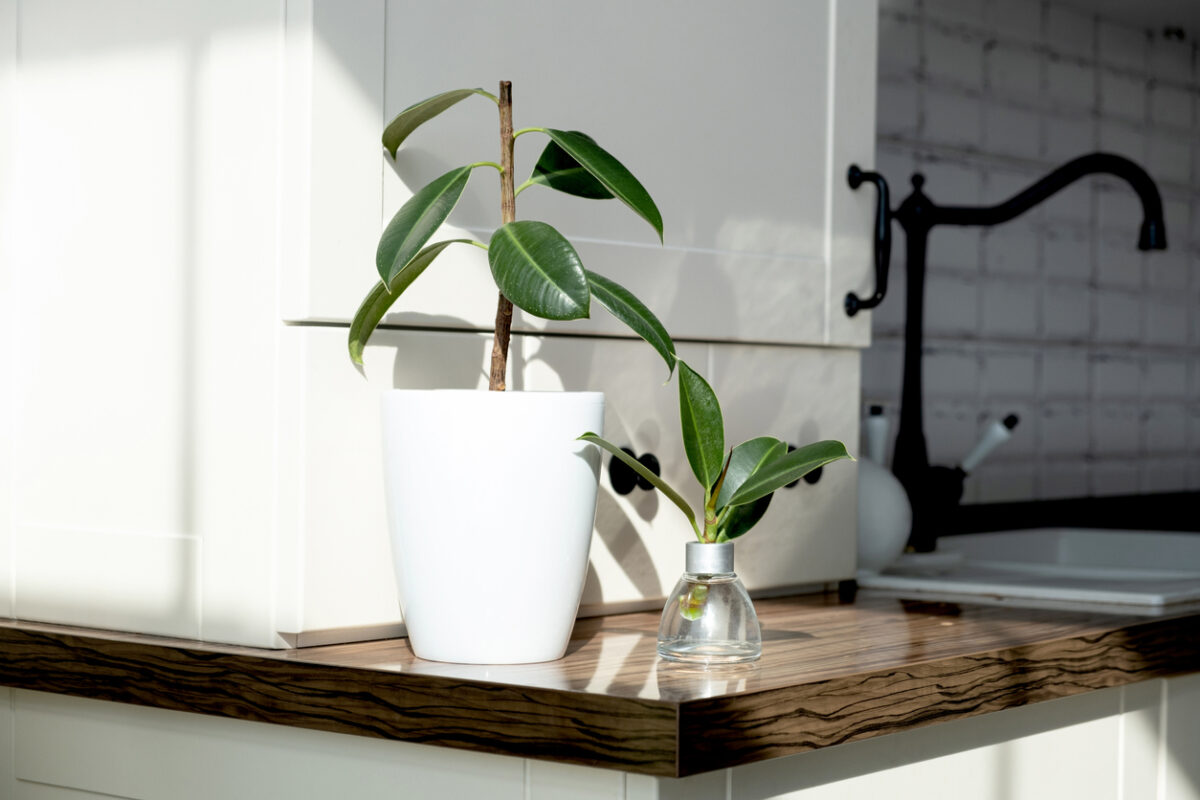

We may earn revenue from the products available on this page and participate in affiliate programs. Learn More ›
Seasoned gardeners talk about propagating plants a lot, but what is propagation exactly? Although the term may sound intimidating, propagation simply means an increase in numbers. As it relates to gardening, propagation refers to increasing your number of houseplants or outdoor plants either by sowing seeds or striking (rooting) cuttings.
While there are a few more complicated plant propagation methods such as grafting, budding, and tissue culture, only growing from seed sowing, plant cuttings, layering, and division will be covered here. However, once you’ve mastered basic plant propagation, you might want to branch out into more unconventional ways of making plant babies!
RELATED: How To: Propagate Succulents
Sexual Propagation
Sexual propagation happens when the wind, an organism, or other vehicle transfers pollen from one plant’s anthers to the same plant’s stigma, or the stigma of another plant of the same species. (Some plant species are capable of self-pollination—the fertilization of a plant with its own pollen—and some aren’t.) If successful, pollination will eventually produce a fruit (often just a seedpod) and seeds.
Keep in mind that members of the same species can cross with each other. For example, squashes and pumpkins both belong to the species Cucurbita pepo, so a pumpkin could cross with a winter squash. Although that won’t affect the current season’s crop, the seeds saved from that union could produce somewhat strange-looking fruits if sown the following year. However, plants usually won’t cross with plants of a different species, even when they’re from the same genus.
Seed
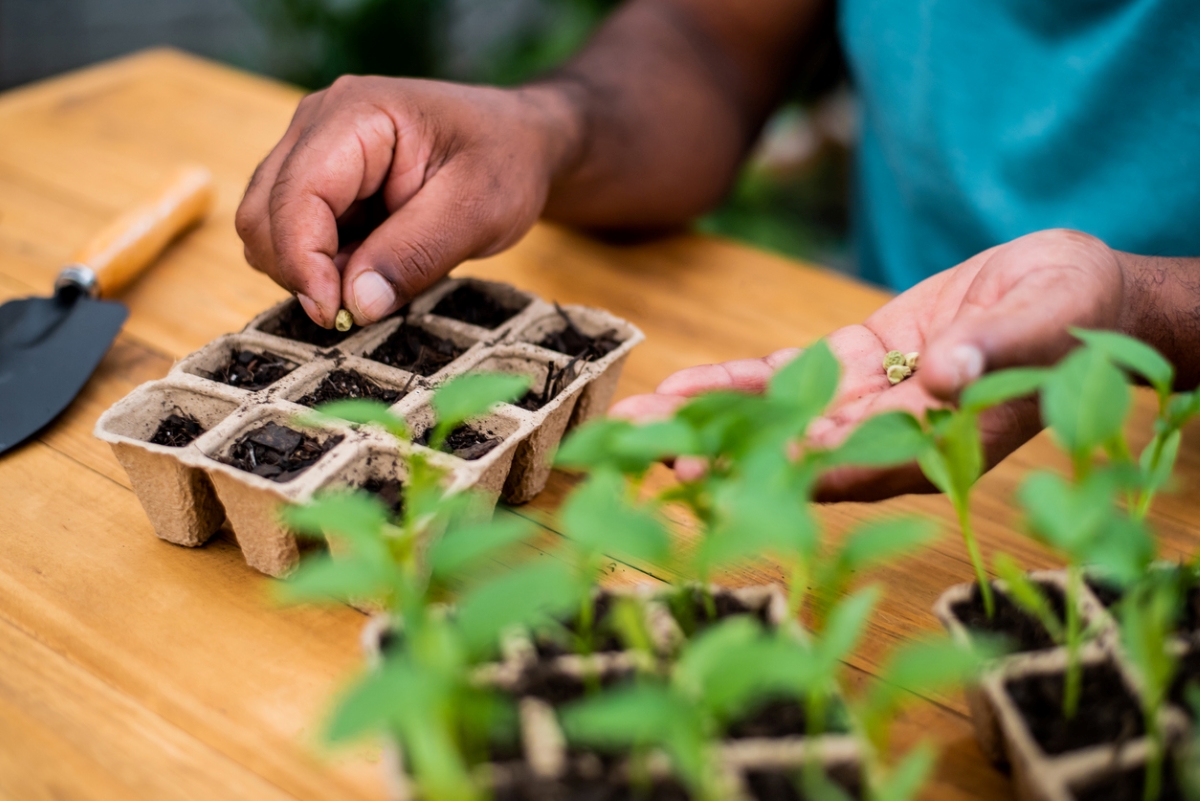
When considering how to propagate plants, keep in mind that seed propagation is as simple as planting seeds at a certain depth—generally twice the diameter of a given seed—in sterile seed starting mix or in the ground outdoors. (Consult a germination book or database to find out your seeds’ ideal conditions.)
Then, you just need to maintain the soil dampness, light, and germination temperature that your specific seeds prefer until they sprout. However, nature sometimes will impose a dormancy period, either with overwintering or hard seed coatings, as explained below.
Stratification: Seeds that require stratification (or chilling) can be planted outdoors in autumn for germination in spring. If the seeds are at risk of being stolen by rodents or washed away, though, you might want to place them inside a covered jar instead, accompanied by a handful of damp seed starting mix.
Placing those jarred seeds in your refrigerator at a temperature of 35 to 45 degrees Fahrenheit will replicate winter conditions well enough that they should eventually sprout—though they could take 3 months to do so! Some plant species may first need a period of warm stratification at room temperature, so be sure to research your seeds’ requirements.
Scarification: A hard seed coat sometimes can prevent a seed from germinating for several years, unless it passes through a bird’s digestive system, is cracked by a forest fire, or is otherwise opened. Nature usually isn’t in a hurry. You likely are, though, and you’ll need a way to penetrate that seed coat so water can enter. Professional growers often use sulfuric acid, which can be dangerous for home gardeners.
Luckily, you can nick or sand the seeds, pour boiling water over them, or soak them in vinegar instead. First, however, you should find a seed germination database that tells you which methods work for which seeds. Boiling water, for example, will crack open some seeds but cook others.
RELATED: How To: Propagate Rosemary
Asexual Propagation
According to the University of Missouri Extension, “Asexual propagation uses vegetative parts of the plant to make a clone, or an exact genetic copy, of the parent plant.” When gardeners propagate from cuttings, they’re actually cloning their plants—often without realizing that they are doing so!
You can accomplish this seed-free vegetative propagation method by taking cuttings, layering stems (partially covering them with soil while they’re still attached to the parent), or by dividing a plant’s rhizomes or offsets. Other methods of asexual propagation include bud cuttings, cane cuttings, and root cuttings, but they won’t be covered here.
Cutting
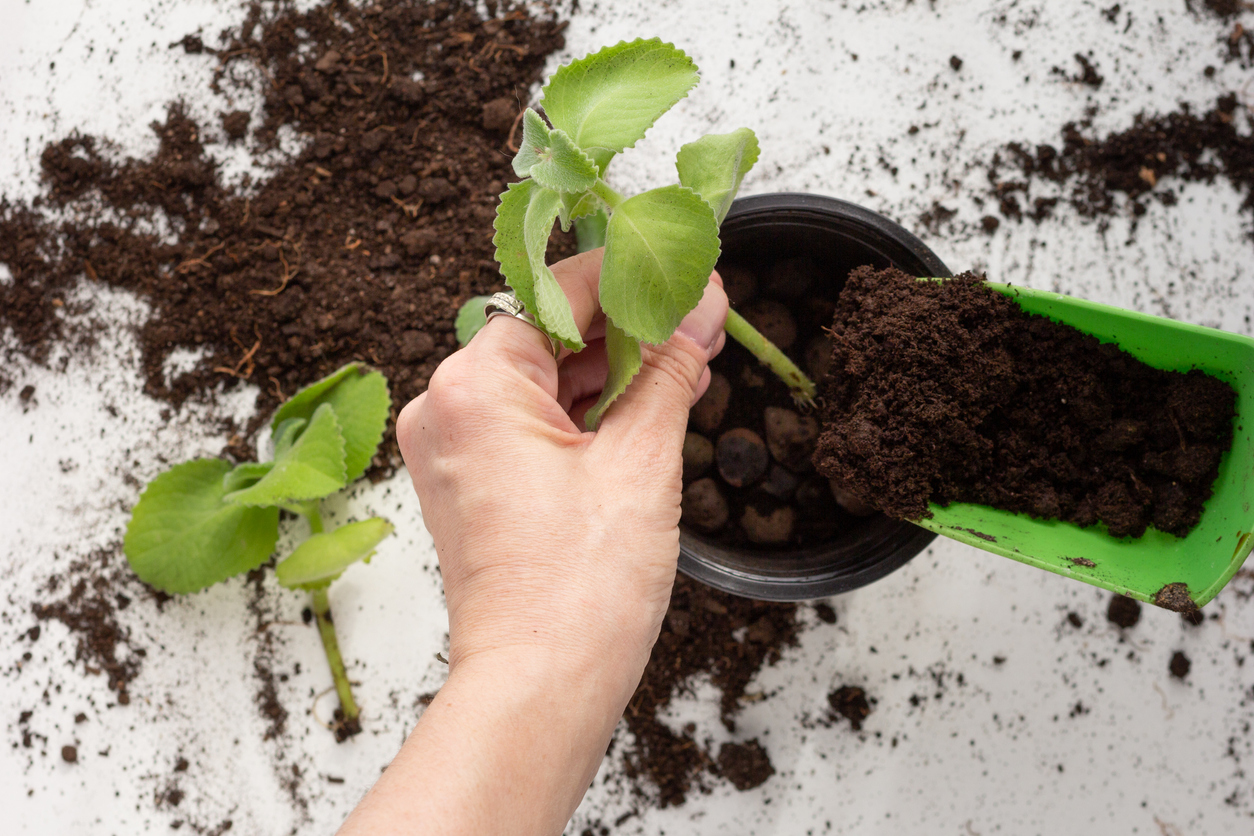
When learning how to take a plant cutting, keep in mind that the recommended size of the cutting may vary according to the time of year it’s taken and whether the cutting is herbaceous, softwood, semi-hardwood, or hardwood.
Stem Cuttings: Generally, taking a stem cutting involves removing the lower leaves of the cutting, dipping its base in a liquid or powdered rooting hormone, and inserting it into a container of sterile seed sowing mix, deep enough to cover at least one of its bare leaf nodes. The container is capped with an inverted transparent plastic bag or a clear plastic jug from which the bottom has been removed. Then, the covered container is kept in bright, indirect light until the cuttings show new growth, indicating that they have rooted.
However, some houseplants and outdoor plants—such as fuchsia and impatiens—root so easily that you can skip the rooting hormone and plastic coverings and place the cuttings in a transparent jar containing an inch or so of water. You then can set that jar on a shaded windowsill until roots appear. (A purchased plant propagation station like this highly-rated option available at Amazon will supply the jars and a holder for them.) Of course, this type of water propagation only will work if you keep adding more water to the jars as necessary.
Leaf Cuttings: Plants with long-stemmed leaves, like African violets, can be propagated from leaf cuttings instead of stem cuttings. Simply remove a leaf from the parent plant, leaving 1 to 2 inches of stem on it. Plant that leaf at an angle in seed starting mix to cover the lower ½ inch of the stem. Then proceed as you would for other cuttings.
Layering
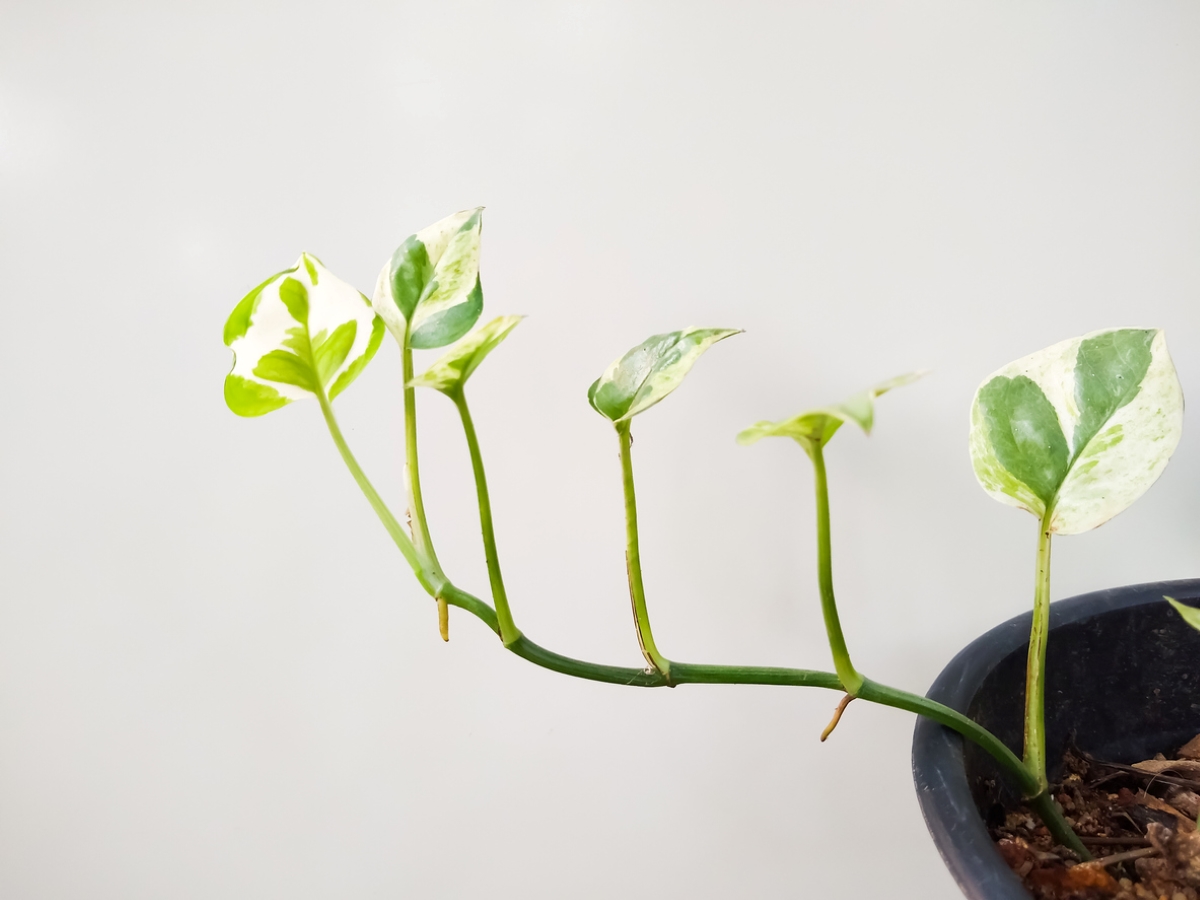
One of the easier methods of plant propagation, layering roots a branch or shoot while it still is attached to the parent plant makes it less likely that the “cutting” will perish in the process.
Compound Layering: Compound layering is a serpentine system for propagating plants, whereby you arch a long shoot or vine that is still attached to the parent plant into and out of the soil at several different points along its length. You may also want to scrape the underside of the vine at the places where it lies underground to make wounds that will encourage rooting. If the vine roots at several points, producing new growth from them, cut between those points to make several new plants.
Air Layering: Air layering cuts leggy houseplants down to size. For it, make cuts about 1 foot down from the tip of the plant. If that plant is a monocot—has foliage with parallel veins—slice upward at a slant just beneath a leaf node but be careful not to penetrate more than a third of the way through the plant’s “trunk.” Then wedge a toothpick into the slit to hold it open. For a dicot plant—which has foliage with branching veins—remove an inch of bark all the way around the trunk instead and scrape away the cambium layer beneath it.
Whichever wound you’ve made, soak or sprinkle it with rooting hormone before wrapping it in damp sphagnum peat moss and enclosing the moss in aluminum foil. If you keep the moss damp, roots eventually should appear in it, after which you can cut the stem below the new roots and pot up the new plant.
Division
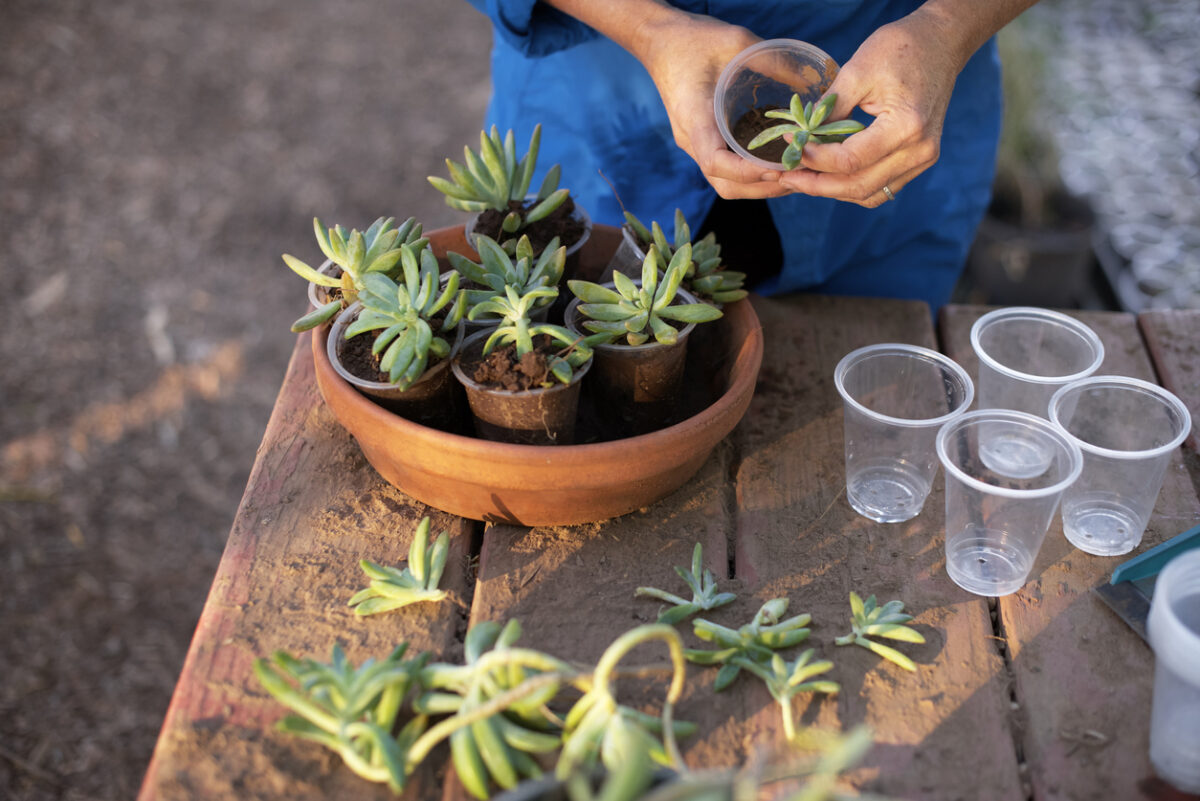
Division generally involves digging up or unpotting a single plant and separating it into two or more pieces. Sometimes that division can be accomplished with your fingers. At other times, you might need a sharp spade or knife to cut root balls or rhizomes into sections or to sever offsets from their parent plant. You may want to sprinkle an antifungal powder on any sections left “raw” by such cuts to prevent disease.
Rhizomes: For plants such as bearded irises that have horizontal underground rhizomes, water the plant well before digging up the rhizomes and attempting to divide different sections from each other with your fingers. You should aim to retain pieces that have some foliage on them, snapping off and discarding pieces that appear dead or diseased. You then can replant the rhizomes at the same depth that they grew before.
Offsets: Some plants make smaller plants called offsets around their bases, which may or may not still be attached to their parent. After you dig up the mother or remove it from its pot, you can simply ease any offsets that aren’t attached away from the parent and plant or pot them up separately. For those still attached, you mighty need to use a sharp knife to cut the apron strings!
Plant Patents
A plant patent is acquired by a company or breeder to protect a unique cultivar that the company or person has created or discovered. As with an author, artist, or inventor, the breeder then has the right to sue anyone who attempts to steal and profit from his or her creation. That includes gardeners who only intend to add the propagated plant to their own plot, though most patent holders are more likely to sue a company for plant reproduction than an individual. The letters PP on a plant’s label or catalog listing mean “Plant Patent” while PPAF indicates “Plant Patent Applied For.”
U.S. Plant Patent Law
In the United States, a plant patent lasts for 20 years and can’t be renewed. Cultivars grown from tubers aren’t eligible for patents, nor can you acquire a patent for cultivars found in the wild rather than on cultivated ground, nor for cultivars that only can be reproduced sexually (by seed). Although sexual reproduction of a patented plant isn’t prohibited, seeds may be protected by Plant Variety Protection certificates instead, which make it illegal for unauthorized persons to sow them.
Is it Illegal to Propagate Patented Plants?
Like the practice of guerilla gardening, it is illegal to propagate patented plants unless the patent has expired or unless you have written permission from the owner of the patented variety to reproduce it. For example, the patent on the ‘New Dawn’ rose—the first plant to receive a patent back in 1931—has long since expired, so gardeners may reproduce it and other heirlooms from cuttings if they like.
Keep in mind, though, that even after a patent expires, a company may still retain a trademark on a cultivar’s name, so you still wouldn’t be permitted to reproduce and sell the plant under that name.
RELATED: How To: Grow Fresh Produce from Your Leftover Groceries
